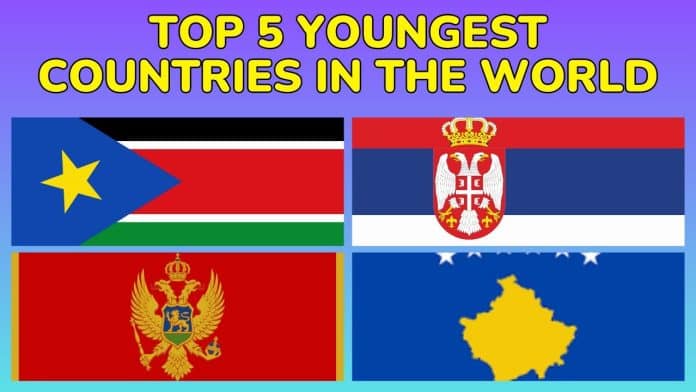According to Historical records, humans have been inhabiting the Nile River Valley since 6000 BCE. Since then, human civilization began to thrive, and the first dynasty in Egypt was erected later in 3100 BCE, hence making the African country the oldest country in the world, Tempo cited from oldest.org.
Along with Egypt, other countries, such as India and Iran, have existed for a considerable length of time. However, this is not the case for some, which were established as recently as the beginning of the 21st century.
Citing US News and Britannica, we’ll explore five of the youngest countries in the world, from South Sudan to Palau. Scroll down to find out more.
List of the Youngest Countries in the World
1. South Sudan
South Sudan holds the title of the youngest country in the world. It was once part of Sudan and officially proclaimed its independence on July 9, 2011, after decades of civil war.
Following its declaration of independence, the country soon gained recognition from the international community and subsequently joined the membership of the United Nations (UN) on July 14 and the African Union (AU) on July 27 in the same year, Britannica explains.
In addition, South Sudan was quite distinctive from its northern counterpart. While Sudan largely comprises Muslim and Arab communities, the majority population of South Sudan is of African tribes embracing Christianity or animist beliefs.
2. Kosovo
Kosovo is one of the most recently established countries in Europe. It is the smallest Balkan country and declared independence from Serbia on February 17, 2008.
Kosovo gained international recognition primarily from the US and most EU members, but countries like Serbia and Russia refused to acknowledge the country’s formation. The lack of international consensus even affected Kosovo’s membership in the UN, says Britannica.
Furthermore, in 2010, the International Court of Justice affirmed the Balkan country’s independence. Even so, Serbia rejected the decision.
3. Serbia and Montenegro
Both Montenegro and Serbia were once under the State Union of Serbia and Montenegro. However, according to Britannica, 55.5 percent of Montenegrins voted in a referendum to secede from the union, resulting in the independence of Montenegro on June 3, 2006.
READ ALSO:
5 things you shouldn’t do for a healthy old age
Subsequently, Serbia restored its independence as a sovereign state on June 5, 2006, following the dissolution of the union. Both Balkan countries are now member states of the EU, joining in 2012.
4. Timor-Leste
Timor-Leste, also known as East Timor, became a sovereign nation on May 20, 2002. The Southeast Asian country was once integrated as Indonesia’s province of East Timor in 1976.
However, due to prolonged conflicts, as well as famine and disease, that resulted in significant loss of life, the East Timorese resisted the Indonesian occupation and annexation. Therefore, a referendum was held by the Indonesian government on August 30, 1999.
Around four-fifths of East Timorese voted for the country’s independence. Timor-Leste regained its independent status and eventually became a sovereign state in May 2002. Later in 2022, the country joined the full membership of ASEAN.
5. Palau
Situated in the western Pacific Ocean, Palau is among the youngest countries in the world. Citing Britannica, it was part of the UN Trust Territory of the Pacific Islands, administered by the US, but later gained full independence on October 1, 1994.
Even so, the Oceania country still relies on financial aid from the US under a Compact of Free Associations (COFA). According to the US Department of State, the latest COFA review agreement, put into force in March 2024, provides Palau economic assistance worth $890 million.













